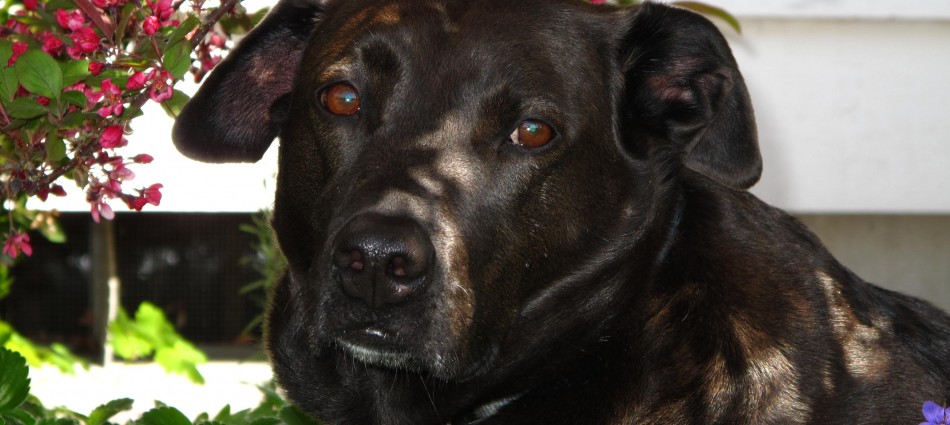Pick-up Dogs How Two Rescue Dogs Save the West from Being Won

Dogs and Epilepsy
It started with a hard thump and then rhythmic pounding in the middle of the night. In a single breath, I was jolted out of sleep and yelled, “Something horrible’s happening.” Marcos’s head pounding against the bed frame in the other room. The horrible of smell of a metallic urine, adrenaline pumped out onto the bed. The smell of fear. A few minutes later, an aftershock. His uncontrollable movements knocked over a bed stand and a pile of books. Like something out of The Exorcist, but without the head spinning.
Without thinking, without knowing anything, I carried all 75 pounds of Marcos down the stairs of our porch and put him into our car. His convulsions making him palpitate in my arms. His gaze, his eyes…he was in another world. I carried him while Kirsten drove to the Animal ER.
“He had a seizure,” the kind vet told us at some ungodly hour.
There was a word that had never really entered my mind before. Intellectually, I knew what epilepsy was and the word “seizure” registered in my vocabulary, but the thought had never entered my mind that what I had just witnessed was a seizure nor had I ever considered that I would encounter a seizure. Marcos, at 8 years old, had his first seizure that we knew of. And man was it intense.
After thinking about it, we remembered another night a few months before that he wet his bed and paced around the house a little lost with worried eyes. “He probably has a mengingioma.” A tumor. Benign, usually, but still could (and would) grow and eventually kill him. An outside chance at brain surgery might save him, but at what cost. The surgery left no guarantee of things being any better afterwards, and could possibly make things worse.
Months went by. And he had seizures, almost, but not quite like clockwork. 3:15 in the morning, every 6 to 8 weeks. He didn’t get worse and he still was a sharp as a tack, walking straight, without any impairment, so probably no tumor, which would have started eroding his balance and sense of space.
Marcos developed a late onset of epilepsy. Idiopathic, because we don’t know the cause. Maybe he had a metabolic disorder or a severe fever. Maybe his brain was damaged when he was beaten by previous owners. Maybe he lost oxygen in the womb, causing brain damage that materialized as epilepsy years later. But the mystery behind it is what makes epilepsy really spooky.
They say to get over a trauma you have to be able to remember it without reliving it. For a full year or more, I relived it, waking up in a cold sweat. 3:15 AM. Every night I just wanted to fast forward through the night and make it through seizure free. I’d wake up in the middle of the night to pee with no chance of falling asleep again.
Some of the fear of Marcos’s epilepsy was taken out by reading The Spirit Catches You and You Fall Down, a book about a Hmong girl with severe epilepsy and the cross-cultural miscommunications that occur between her refugee parents and western doctors. Indeed, with the language barrier, the doctors have to practice what they call “veterinary medicine.”
The Spirit Catches You and You Fall Down is what the Hmong call epilepsy. In other words, there is so much fear that the sufferer becomes so profoundly frightened that the soul flees her body and becomes lost. Quag dab peg. Dab is the soul-stealing spirit. Peg means catch or hit and quag means to fall over with one’s roots still in the ground.
A shaman, through a series of ceremonies, can be recruited to retrieve an errant soul. In an interesting turn of fate,epileptics, though shunned from becoming priests in the Catholic church, might be seen as fit for divine office in the world of the Hmong. The seizures are believed to be evidence that epileptics perceive things other people don’t see. The seizures are a gateway into trances, prerequisite for making journeys through the world of the unseen. That they are sick themselves gives epileptics an intuitive sympathy for the suffering of others and gives them an emotional credibility as healers. In other words, epilepsy marks the epileptic as a person of consequence with the ability to become a healer, a shaman, because they can enter other worlds and know what it is like to be on the other side.
Whether what Marcos has is the most common form of neurological disorders, an electrical storm in his brain, or if the spirit catches him and then he falls down, is not important. What happens is real and it’s intense. Something happens in his brain and it’s physical and it’s spiritual and it puts him in a very different state that is difficult to describe. The Hmong seem to have a better concept on the idea that there is no split between mind and body and the physical and the spiritual. Those concepts are intertwined, one depending on the other, and it’s evident in something like epilepsy. And it’s possibly more healthy, in a holistic way, to see the epilepsy in this more comprehensive manner. More than just convulsing, Marcos goes to another world. And any way that can help explain it helps make it felt, by us, in such a way that we can wrap our heads around it.
In the book, author Anne Fadiman traces the history of epilepsy and what it means to different cultures. The Greeks called epilepsy “the sacred disease.” Indeed, Marcos could be added “to a distinguished line of epileptics that has included, Kierkegaard, van Gogh, Flaubert, Lewis Carroll and Dostoyevsky, all of whom, like many Hmong shamans, experienced a powerful sense of grandeur and spiritual passion during their seizures, and powerful creative urges in their wake.” Indeed, Marcos is at his most peppy right after a seizure and one wonders what is going through his brain. As Dostoyevsky’s Prince Myshikin asked, “What if it is a disease? What does it matter that it is an abnormal tension, if the result, if the moment of sensation, remembered and anaylsed in a state of health, turns out to be harmony and beauty brought to their highest point of perfection, and gives a feeling, undivined and undreamt of till then, of completeness, proportion, reconciliation, and an ecstatic and prayerful fusion in the highest synthesis of life?”
At the end of the day, though, more than a dramatic illustration of how intense life can be, epilepsy is a lesson in love. Does it put us on edge that we could be woken up on any given night at 3:15 by the awful thumping sounds of a dog convulsing out of control? Certainly. Have we spent a small fortune on schedule I narcotics, Chinese herbs, acupuncture, medical marijuana, anything, to help Marcos make it through the night seizure free? Yes. All in the name of love. Though we knew how much we loved him before, Marcos’s seizures were a reminder of just how much we loved him. Like the Hmong family and their reverence of their young epileptic daughter, Marcos became special. He was always special, but we are reminded every day of how special he is and his epilepsy makes it that important to make the most of every day with him and to show just how much we love him.

